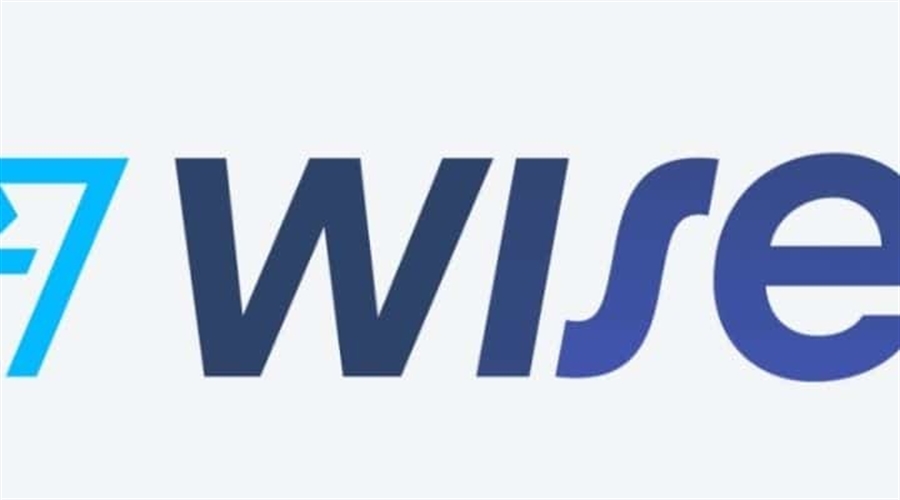[ad_1]
Wise plc (formerly Transferwise) reported a 63 percent increase in the total income for six months, between April and September, as the figure touched £416 million. It ended the period with a pre-tax profit of £51.3 million, which increased by 173 percent.
The company’s revenue for the six-month period increased by 55 percent to £397 million. Further, The adjusted EBITDA increased by 52 percent to £92 million with a margin of 22 percent.
The London-headquartered fintech
Fintech
Financial Technology (fintech) is defined as ay technology that is geared towards automating and enhancing the delivery and application of financial services. The origin of the term fintechs can be traced back to the 1990s where it was primarily used as a back-end system technology for renowned financial institutions. However, it has since grown outside the business sector with an increased focus upon consumer services.What Purpose Do Fintechs Serve?The main purpose of fintechs would be to supply a technological service that not only simplifies but also aids consumers, business operators, and networks.This is done by optimizing business processes and financial operations through the implementation of specialized software, algorithms, and automated computing processes. Transitioning from the roots of the financial sector, fintech providers can be found through a multitude of industries such as retail banking, education, cryptocurrencies, insurance, nonprofit, and more. While fintechs cover a vast array of business sectors, it can be broken down into four classifications which are as followed: Business-to-business for banks, Business-to-business for banking business clients, business-to-consumers for small businesses, and consumers. More recently, fintechs presence has become increasingly apparent within the trading sector, primarily for cryptocurrencies and blockchain technology.The creation and use of Bitcoin can also be contributed to innovations brought upon by fintechs while smart contracts through blockchain technology have simplified and automated contracts between buyers and sellers. As a whole, fintechs applications are growing more diverse with a consumer-centric focus while its applications continue to innovate the trading and cryptocurrency sectors through automated technologies and business practices.
Financial Technology (fintech) is defined as ay technology that is geared towards automating and enhancing the delivery and application of financial services. The origin of the term fintechs can be traced back to the 1990s where it was primarily used as a back-end system technology for renowned financial institutions. However, it has since grown outside the business sector with an increased focus upon consumer services.What Purpose Do Fintechs Serve?The main purpose of fintechs would be to supply a technological service that not only simplifies but also aids consumers, business operators, and networks.This is done by optimizing business processes and financial operations through the implementation of specialized software, algorithms, and automated computing processes. Transitioning from the roots of the financial sector, fintech providers can be found through a multitude of industries such as retail banking, education, cryptocurrencies, insurance, nonprofit, and more. While fintechs cover a vast array of business sectors, it can be broken down into four classifications which are as followed: Business-to-business for banks, Business-to-business for banking business clients, business-to-consumers for small businesses, and consumers. More recently, fintechs presence has become increasingly apparent within the trading sector, primarily for cryptocurrencies and blockchain technology.The creation and use of Bitcoin can also be contributed to innovations brought upon by fintechs while smart contracts through blockchain technology have simplified and automated contracts between buyers and sellers. As a whole, fintechs applications are growing more diverse with a consumer-centric focus while its applications continue to innovate the trading and cryptocurrency sectors through automated technologies and business practices.
Read this Term giant highlighted that active customers and increased total volumes boosted revenue growth. Indeed, the platform had 5.5 million active customers by the end of the second quarter of FY23 compared to 3.9 million in the same quarter of the previous year, representing a growth of 40 percent.
The platform moved over £51 billion worth of customer funds in six months. This figure jumped 49 percent from the previous year’s first half.
“In the first half of this financial year, our payments
Payments
One of the bases of mediums of exchange in the modern world, a payment constitutes the transfer of a legal currency or equivalent from one party in exchange for goods or services to another entity. The payments industry has become a fixture of modern commerce, though the players involved and means of exchange have dramatically shifted over time.In particular, a party making a payment is referred to as a payer, with the payee reflecting the individual or entity receiving the payment. Most commonly the basis of exchange involves fiat currency or legal tender, be it in the form of cash, credit or bank transfers, debit, or checks. While typically associated with cash transfers, payments can also be made in anything of perceived value, be it stock or bartering – though this is far more limited today than it has been in the past.The Largest Players in the Payments IndustryFor most individuals, the payments industry is dominated currently by card companies such as Visa or Mastercard, which facilitate the use of credit or debit expenditures. More recently, this industry has seen the rise of Peer-to-Peer (P2P) payments services, which have gained tremendous traction in Europe, the United States, and Asia, among other continents.One of the biggest parameters for payments is timing, which looms as a crucial element for execution. By this metric, consumer demand incentivizes technology that prioritizes the fastest payment execution.This can help explain the preference for debit and credit payments overtaking check or money orders, which in previous decades were much more commonly utilized. A multi-billion-dollar industry, the payments space has seen some of the most innovation and advances in recent years as companies look to push contactless technology with faster execution times.
One of the bases of mediums of exchange in the modern world, a payment constitutes the transfer of a legal currency or equivalent from one party in exchange for goods or services to another entity. The payments industry has become a fixture of modern commerce, though the players involved and means of exchange have dramatically shifted over time.In particular, a party making a payment is referred to as a payer, with the payee reflecting the individual or entity receiving the payment. Most commonly the basis of exchange involves fiat currency or legal tender, be it in the form of cash, credit or bank transfers, debit, or checks. While typically associated with cash transfers, payments can also be made in anything of perceived value, be it stock or bartering – though this is far more limited today than it has been in the past.The Largest Players in the Payments IndustryFor most individuals, the payments industry is dominated currently by card companies such as Visa or Mastercard, which facilitate the use of credit or debit expenditures. More recently, this industry has seen the rise of Peer-to-Peer (P2P) payments services, which have gained tremendous traction in Europe, the United States, and Asia, among other continents.One of the biggest parameters for payments is timing, which looms as a crucial element for execution. By this metric, consumer demand incentivizes technology that prioritizes the fastest payment execution.This can help explain the preference for debit and credit payments overtaking check or money orders, which in previous decades were much more commonly utilized. A multi-billion-dollar industry, the payments space has seen some of the most innovation and advances in recent years as companies look to push contactless technology with faster execution times.
Read this Term got faster, hitting a key milestone with 50 percent of all transfers now instant. And while we had to increase prices on some routes, we were able to decrease fees on others, enabling us to limit the impact of more volatile markets,” said Kristo Käärmann, the Co-Founder and Chief Executive Officer at Wise.
Bullish Forecast
For the entire fiscal year, Wise is expecting its total income to increase between 55 percent and 60 percent. In addition, it aims to grow the total income by more than 20 percent CAGR ‘over the medium-term’, with the adjusted margin at or above 20 percent.
Earlier this year, the company paid $360,000 in penalties to the Abu Dhabi Global Market (ADGM) ‘s Financial Services Regulatory Authority (FSRA) for lapses in anti-money laundering (AML) controls. Meanwhile, it gained an Estonian license for expanding European operations.
“But, we are still solving only a fraction of the problem, and the fight for transparency must go on,” Käärmann added. “In the past months, we also joined the European Commission in calling on all providers to commit to full disclosure on all fees, including exchange rate markups, on all transfers to Ukraine – a significant step forward in the right direction for transparency in the industry.”
Wise plc (formerly Transferwise) reported a 63 percent increase in the total income for six months, between April and September, as the figure touched £416 million. It ended the period with a pre-tax profit of £51.3 million, which increased by 173 percent.
The company’s revenue for the six-month period increased by 55 percent to £397 million. Further, The adjusted EBITDA increased by 52 percent to £92 million with a margin of 22 percent.
The London-headquartered fintech
Fintech
Financial Technology (fintech) is defined as ay technology that is geared towards automating and enhancing the delivery and application of financial services. The origin of the term fintechs can be traced back to the 1990s where it was primarily used as a back-end system technology for renowned financial institutions. However, it has since grown outside the business sector with an increased focus upon consumer services.What Purpose Do Fintechs Serve?The main purpose of fintechs would be to supply a technological service that not only simplifies but also aids consumers, business operators, and networks.This is done by optimizing business processes and financial operations through the implementation of specialized software, algorithms, and automated computing processes. Transitioning from the roots of the financial sector, fintech providers can be found through a multitude of industries such as retail banking, education, cryptocurrencies, insurance, nonprofit, and more. While fintechs cover a vast array of business sectors, it can be broken down into four classifications which are as followed: Business-to-business for banks, Business-to-business for banking business clients, business-to-consumers for small businesses, and consumers. More recently, fintechs presence has become increasingly apparent within the trading sector, primarily for cryptocurrencies and blockchain technology.The creation and use of Bitcoin can also be contributed to innovations brought upon by fintechs while smart contracts through blockchain technology have simplified and automated contracts between buyers and sellers. As a whole, fintechs applications are growing more diverse with a consumer-centric focus while its applications continue to innovate the trading and cryptocurrency sectors through automated technologies and business practices.
Financial Technology (fintech) is defined as ay technology that is geared towards automating and enhancing the delivery and application of financial services. The origin of the term fintechs can be traced back to the 1990s where it was primarily used as a back-end system technology for renowned financial institutions. However, it has since grown outside the business sector with an increased focus upon consumer services.What Purpose Do Fintechs Serve?The main purpose of fintechs would be to supply a technological service that not only simplifies but also aids consumers, business operators, and networks.This is done by optimizing business processes and financial operations through the implementation of specialized software, algorithms, and automated computing processes. Transitioning from the roots of the financial sector, fintech providers can be found through a multitude of industries such as retail banking, education, cryptocurrencies, insurance, nonprofit, and more. While fintechs cover a vast array of business sectors, it can be broken down into four classifications which are as followed: Business-to-business for banks, Business-to-business for banking business clients, business-to-consumers for small businesses, and consumers. More recently, fintechs presence has become increasingly apparent within the trading sector, primarily for cryptocurrencies and blockchain technology.The creation and use of Bitcoin can also be contributed to innovations brought upon by fintechs while smart contracts through blockchain technology have simplified and automated contracts between buyers and sellers. As a whole, fintechs applications are growing more diverse with a consumer-centric focus while its applications continue to innovate the trading and cryptocurrency sectors through automated technologies and business practices.
Read this Term giant highlighted that active customers and increased total volumes boosted revenue growth. Indeed, the platform had 5.5 million active customers by the end of the second quarter of FY23 compared to 3.9 million in the same quarter of the previous year, representing a growth of 40 percent.
The platform moved over £51 billion worth of customer funds in six months. This figure jumped 49 percent from the previous year’s first half.
“In the first half of this financial year, our payments
Payments
One of the bases of mediums of exchange in the modern world, a payment constitutes the transfer of a legal currency or equivalent from one party in exchange for goods or services to another entity. The payments industry has become a fixture of modern commerce, though the players involved and means of exchange have dramatically shifted over time.In particular, a party making a payment is referred to as a payer, with the payee reflecting the individual or entity receiving the payment. Most commonly the basis of exchange involves fiat currency or legal tender, be it in the form of cash, credit or bank transfers, debit, or checks. While typically associated with cash transfers, payments can also be made in anything of perceived value, be it stock or bartering – though this is far more limited today than it has been in the past.The Largest Players in the Payments IndustryFor most individuals, the payments industry is dominated currently by card companies such as Visa or Mastercard, which facilitate the use of credit or debit expenditures. More recently, this industry has seen the rise of Peer-to-Peer (P2P) payments services, which have gained tremendous traction in Europe, the United States, and Asia, among other continents.One of the biggest parameters for payments is timing, which looms as a crucial element for execution. By this metric, consumer demand incentivizes technology that prioritizes the fastest payment execution.This can help explain the preference for debit and credit payments overtaking check or money orders, which in previous decades were much more commonly utilized. A multi-billion-dollar industry, the payments space has seen some of the most innovation and advances in recent years as companies look to push contactless technology with faster execution times.
One of the bases of mediums of exchange in the modern world, a payment constitutes the transfer of a legal currency or equivalent from one party in exchange for goods or services to another entity. The payments industry has become a fixture of modern commerce, though the players involved and means of exchange have dramatically shifted over time.In particular, a party making a payment is referred to as a payer, with the payee reflecting the individual or entity receiving the payment. Most commonly the basis of exchange involves fiat currency or legal tender, be it in the form of cash, credit or bank transfers, debit, or checks. While typically associated with cash transfers, payments can also be made in anything of perceived value, be it stock or bartering – though this is far more limited today than it has been in the past.The Largest Players in the Payments IndustryFor most individuals, the payments industry is dominated currently by card companies such as Visa or Mastercard, which facilitate the use of credit or debit expenditures. More recently, this industry has seen the rise of Peer-to-Peer (P2P) payments services, which have gained tremendous traction in Europe, the United States, and Asia, among other continents.One of the biggest parameters for payments is timing, which looms as a crucial element for execution. By this metric, consumer demand incentivizes technology that prioritizes the fastest payment execution.This can help explain the preference for debit and credit payments overtaking check or money orders, which in previous decades were much more commonly utilized. A multi-billion-dollar industry, the payments space has seen some of the most innovation and advances in recent years as companies look to push contactless technology with faster execution times.
Read this Term got faster, hitting a key milestone with 50 percent of all transfers now instant. And while we had to increase prices on some routes, we were able to decrease fees on others, enabling us to limit the impact of more volatile markets,” said Kristo Käärmann, the Co-Founder and Chief Executive Officer at Wise.
Bullish Forecast
For the entire fiscal year, Wise is expecting its total income to increase between 55 percent and 60 percent. In addition, it aims to grow the total income by more than 20 percent CAGR ‘over the medium-term’, with the adjusted margin at or above 20 percent.
Earlier this year, the company paid $360,000 in penalties to the Abu Dhabi Global Market (ADGM) ‘s Financial Services Regulatory Authority (FSRA) for lapses in anti-money laundering (AML) controls. Meanwhile, it gained an Estonian license for expanding European operations.
“But, we are still solving only a fraction of the problem, and the fight for transparency must go on,” Käärmann added. “In the past months, we also joined the European Commission in calling on all providers to commit to full disclosure on all fees, including exchange rate markups, on all transfers to Ukraine – a significant step forward in the right direction for transparency in the industry.”
[ad_2]
Source link
My NEO Group:
– White paper My NEO Group: https://myneo.org
– Discover NEO X: https://docs.myneo.org/products/in-development/neo-x
– Disccover NEO Dash: https://myneodash.com
– Discover Banca NEO: https://bancaneo.org
– Interview of the CEO of My NEO Group, Mickael Mosse, in Forbes: https://forbesbaltics.com/en/money/article/mickael-mosse-affirms-commitment-to-redefining-online-banking-with-bancaneo






